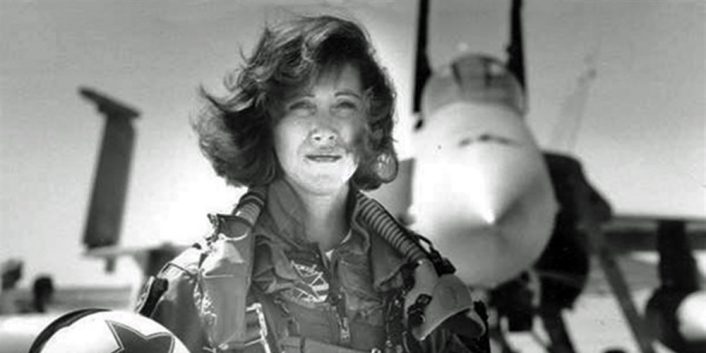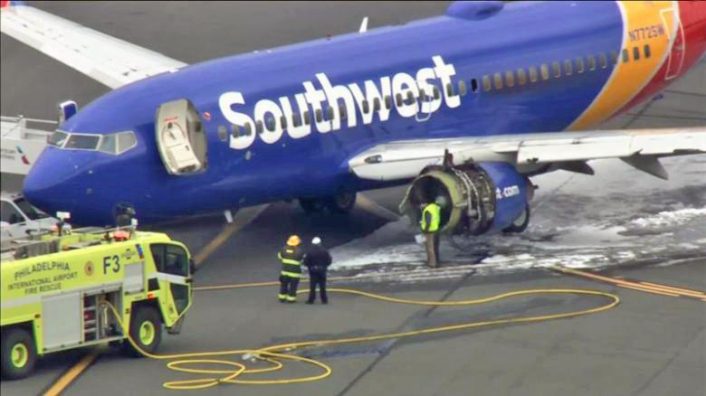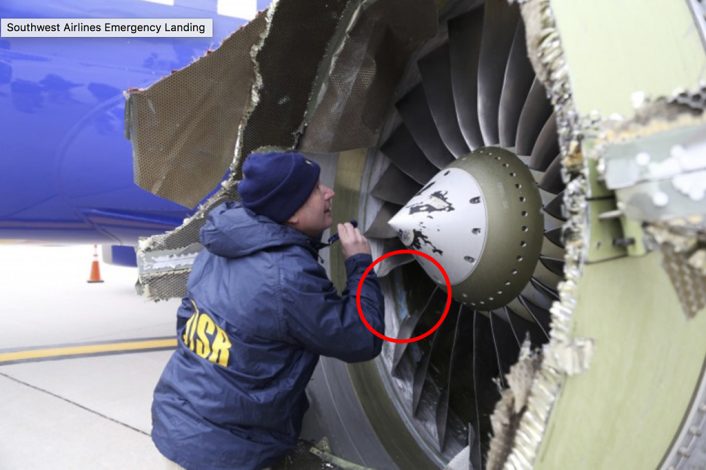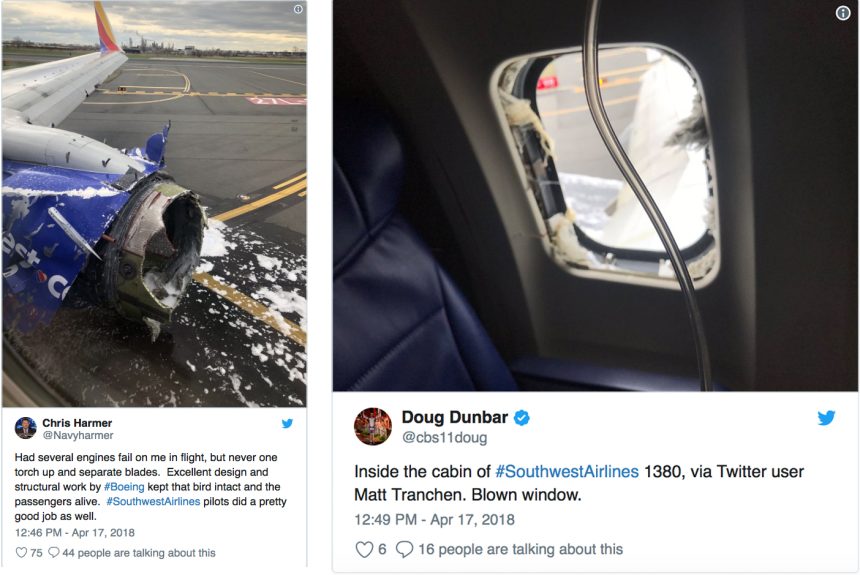Accident Investigation Focuses on CFM56-7B Engine. Navy P-8A Uses Same Engine.
Media around the world is acknowledging Southwest Airlines Captain Tammie Jo Shults for her role in landing a Boeing 737-700 airliner after the port (left) jet engine disintegrated and damaged the aircraft’s wing and fuselage during a routine flight from New York’s La Guardia airport to Dallas, Texas on Tuesday, April 17, 2018.
There were 143 passengers and five crew on board. The accident resulted in one fatality and seven injuries. The aircraft was at 32,000 feet when the accident occurred according to several reports. Capt. Shults declared an in-flight emergency and diverted to Philadelphia International Airport where she made a successful emergency landing with the damaged aircraft.
The Captain of the flight, Tammie Jo Shults, was among the first female pilots in the U.S. Navy to fly the Boeing F/A-18 Hornet multi-role attack aircraft. Stories from around the internet are quoting a 1993 Navy magazine article as saying Shults was an A-7 Corsair (possibly the EA-7L electronic warfare variant) and F/A-18 pilot. She is reported to have flown with VAQ-34, the “Flashbacks”, a Tactical Electronic Warfare Squadron of the U.S. Navy that provided threat simulation for air combat training. Many reports are citing that, at the time Shults was a naval aviator, that female pilots were not included as pilots in combat units, effectively preventing her from flying fighter aircraft operationally.

Shults was quoted on several blogs including Heavy.com and FoxtrotAlpha.com as telling Navy magazine, “In AOCS (Aviation Officer Candidate School), if you’re a woman (or different in any way), you’re high profile; you’re under more scrutiny.” Shults told the magazine that chances for women to advance in the aviation community were limited. “It would be nice if they would take away the ceilings (women) have over our heads,” she told the magazine. She praised her former U.S. Navy squadron by saying, “In VAQ-34, gender doesn’t matter, there’s no advantage or disadvantage. Which proves my point – if there’s a good mix of gender, it ceases to be an issue.”
As of Wednesday morning, the day after the accident, media outlets as far away as the South China Morning Post were writing that Shults is, “Being praised for her ‘nerves of steel’ in helping to prevent a far worse tragedy.” The Associated Press ran a quote from her brother-in-law who told them, “She’s a formidable woman, as sharp as a tack.”
A report on NBC News said that Capt. Shults, 56, is a 1983 graduate of MidAmerica Nazarene University in Olathe, Kansas. She earned a degree in biology and agribusiness at the school before going on to become a naval aviator. Her husband is also a pilot for Southwest Airlines.
NBC News reporters Elizabeth Chuck and Shamar Walters went on to report that, “The passengers described horror in the moments after the plane’s window was shattered. Passenger Eric Zilbert told NBC News that a woman was “partially sucked out” of the plane by explosive decompression of the cabin. Zilbert told NBC News that a group of passengers leapt over seats inside the Boeing 737 to pull the woman back in. A group of passengers then performed CPR on the woman following the window failure.
As with all aviation accidents, an investigation into the cause of accident is already underway in the U.S.

Southwest Airlines’ Capt. Shults calm demeanor and professional airmanship recall the January 2009 incident referred to as the “Miracle on the Hudson” when U.S. Airways flight 1549, an Airbus A320-214 with 155 people on board, made an emergency water landing in the Hudson River in New York after losing both engines during take-off to a bird strike incident. The pilots in that celebrated incident, Capt. Chesley “Sully” Sullenberger and First Officer Jeffrey Skiles, were lauded as heroes and went on to be portrayed in a Hollywood movie about the incident. Capt. Sully Sullenberger was also a former military pilot prior to his career at U.S. Airways, having flown the F-4D Phantom II and acting as Blue Force commander at Red Flag air combat simulation exercises at Nellis AFB, Nevada.
As with all aviation accidents, an investigation into the cause of accident is already underway in the U.S.
On Thursday, the BBC World News reported that, “Investigators say there was a fault with the engine’s fan blades – the cause of [an] incident two years ago.” The previous engine failure occurred on a Boeing 737 in 2016. The aircraft made an emergency landing in Florida.
The Boeing 737-700 in this accident used two CFM56-7B engines. Because of the incidents with the CFM56-7B powerplants on 737s the National Transportation and Safety Board (NTSB), the civilian authority for commercial aviation in the U.S., there will be an “Airworthiness Directive” bulletin issued within the next two weeks directing the detailed inspection of many of the CFM engines. CFM told the BBC World News that more than 8,000 Boeing 737s in service around the world use the CFM56-7B engine.

The military version of the Boeing 737 airliner, the long-range maritime and anti-submarine warfare P-8A Poseidon as well as the other combat variant (such as the E7 AEW&C) also use the CFM-56-7B engines. The P-8A is in service with the U.S., Australia, Norway, India and the U.K. forces. As of this week there have been no public directives about engine inspections on the military version of the aircraft.
Top image: The Boeing 737 aircraft showed substantial damage after the engine failure. (Photos: via Twitter)









